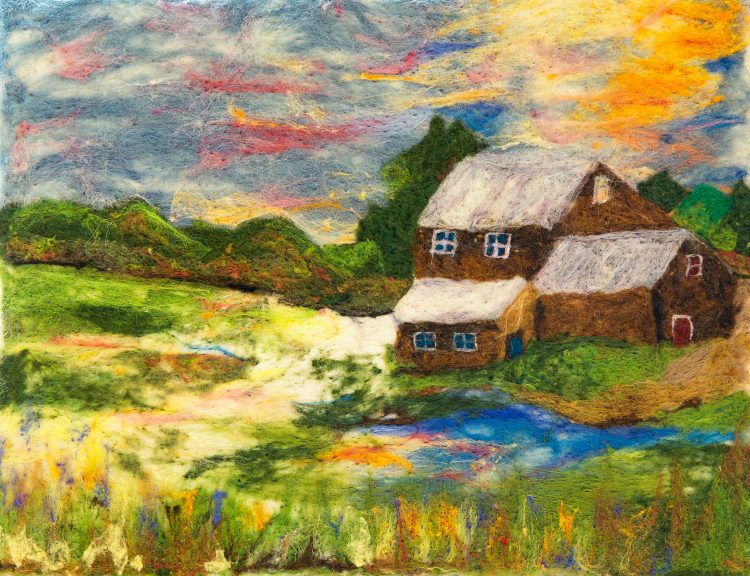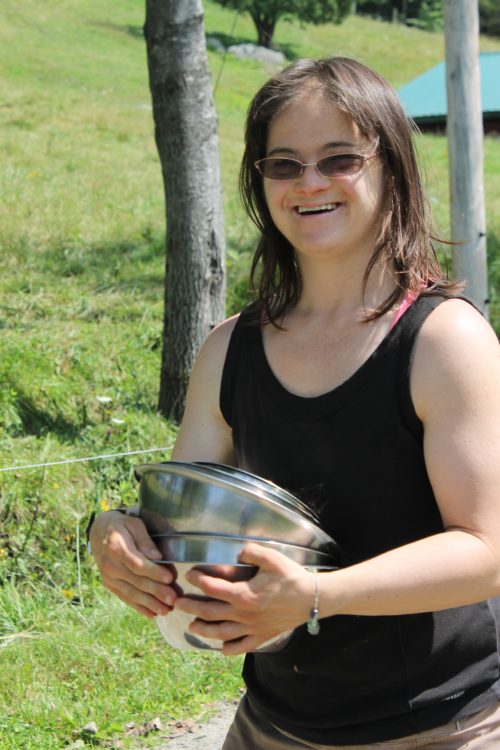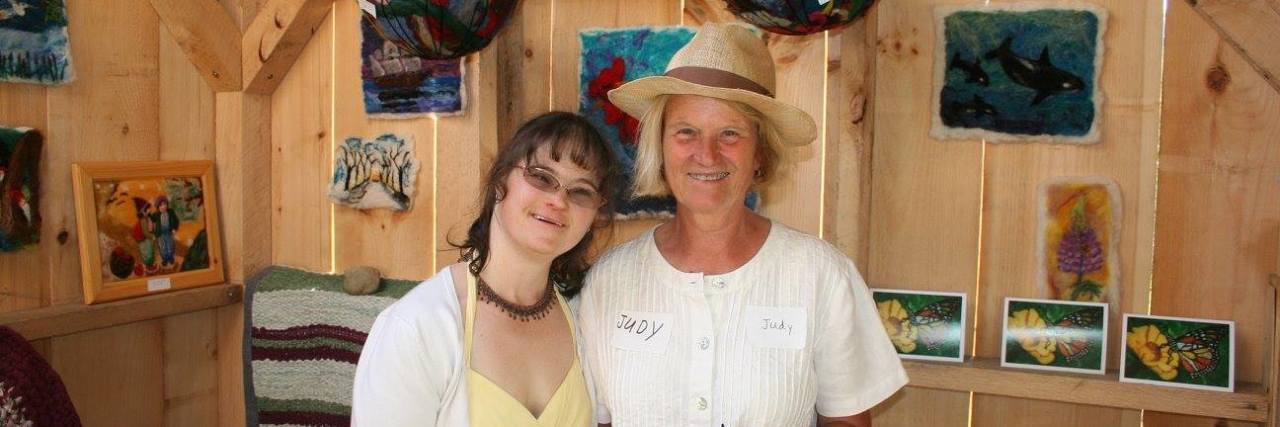Helping My Daughter With Down Syndrome Find an Inclusive Community
Editor's Note
This story was written by Judith Jackson and published with her daughter’s permission.
This March 21st — World Down Syndrome Day — I’ll be celebrating the many achievements of my daughter, Annie.
Annie is an accomplished textile artist. Her work has been selected for the upcoming FLOURISH exhibition at the Flynn Center in Burlington, Vermont. Annie and her boyfriend, Chris, recently traveled to California for their dream vacation. Annie has diverse interests, from snowboarding to needle felting.

Annie also has Down Syndrome, a chromosomal condition that may describe her, but falls short of defining everything she is and can be. Today, Annie is deeply happy. She has an amazing community to call home. But this wasn’t always the case. A decade ago, my daughter was in crisis.
Annie had enrolled in a program to promote independent living among people with disabilities. She received two years of on-campus education in independent living skills. Then she transitioned to a private apartment and received staff support every few days.
Annie could walk to the grocery store from her apartment. The bus line ran past her door. The YMCA was a few blocks away. There was a theater around the corner. On paper, her surroundings were integrated and inclusive. Annie was living the dream to which so many people with disabilities aspire.
But there is more to inclusion than “checking the boxes” for independent living. Though technically integrated into her community, Annie was emotionally and socially isolated. The effects left my vibrant young daughter almost unrecognizable.
By age 26, Annie rarely left her apartment. Five feet tall, she weighed 230 pounds. She became profoundly depressed and took eight different daily medications. Her teeth were abscessed. Her weight made walking difficult. Her few relationships were exploitive. Ultimately, her physician told us she could no longer take responsibility for Annie’s care if she remained in her living situation.
Our family began an intensive search to help Annie find a healthy alternative. We knew she needed a community where she would find acceptance and true connections with the people around her. We understood that Annie needed life skills, and a life filled with healthy relationships and opportunities to use the skills she acquired. We recognized Annie’s need for independence, but also the importance of an environment where she could depend on others and where others could count on her.
Through a relative, we found Heartbeet Lifesharing on a beautiful hillside in Hardwick, Vermont. Initially, I worried it was too far from home. Set in an iconic rural landscape, perhaps Heartbeet was too remote. It was the opposite of Annie’s previous home. Despite some skepticism, we visited one hot August afternoon.
Our stay revealed a lively, relationship-rich environment — 160 acres of dignity and opportunity, thoroughly integrated into the wider community and the world. A place where people with and without developmental disabilities live and work together, Heartbeet is part of the Camphill movement.
Community members share meals and experiences. They enjoy festivals and a rich cultural and artistic life. They work together at textile studios, a therapeutic farm and garden devoted to sustainable agriculture, and a community kitchen dedicated to artisanal food.
Since moving, Annie has reclaimed her happiness and confidence. She walks — or snowshoes — miles each day. She now weighs 120 pounds. She works part-time at a local artisanal cheesemaker, and takes personal pride whenever they win a gold medal. 
Annie is happily interdependent on the people around her. She volunteers downtown at a weekly community lunch and votes at the Town Meeting. Annie and her boyfriend have frequent dinner dates in local restaurants. She serves as a member of the Heartbeet Lifesharing Board of Trustees.
Joining an intentional community has given Annie a new life. It has allowed her to build bridges to wherever she wants to go. Annie is proud of her abilities, and is eager to share them with others.
Coincidentally, that’s what this World Down Syndrome Day is about: what people with Down Syndrome can bring to their communities. With Annie’s support, I am sharing her story in celebration.
To the many people silently suffering from social isolation within seemingly integrated communities, Annie can bring hope.
May Annie’s experiences inspire genuine inclusion of those who are vulnerable to exclusion and isolation. May Annie remind us how much we have to gain from making personal connections with people of all abilities. May she expand opportunities for all to contribute to communities, whatever our strengths and weaknesses.

